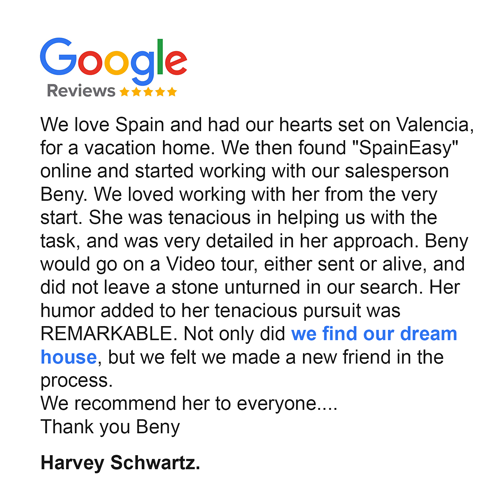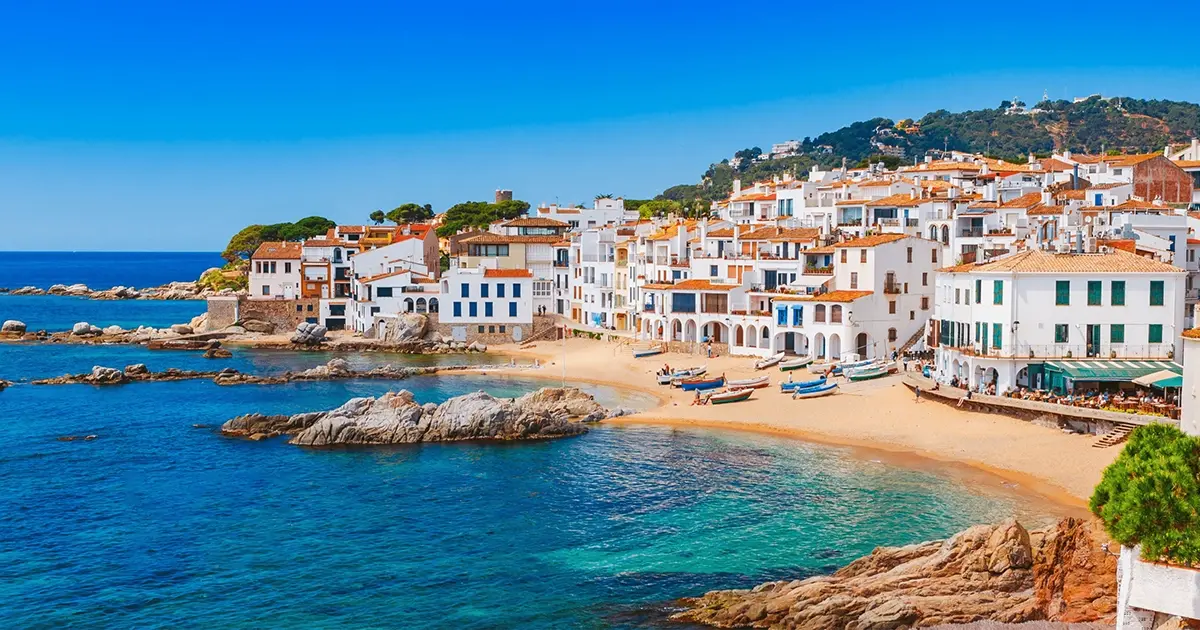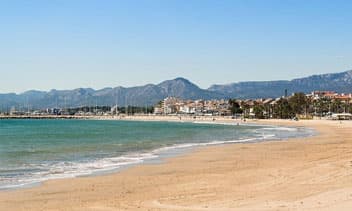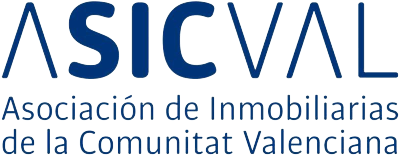
Spain Retirement Visas in 2025: Non-Lucrative Visa & Other Residency Options Explained
Last update: September 3, 2025
Reading time: 19.7 min
Why Most Non-EU Retirees Need a Visa to Live in Spain
If you’re a retiree from outside the EU, EEA, or Switzerland, Spain’s warm climate and relaxed lifestyle can be incredibly tempting — but the rules of the Schengen Area will shape how long you can stay without a visa. For anyone dreaming of more than a seasonal visit, understanding these rules and their limitations is essential before making the leap.
Understanding the 90/180 Day Schengen Rule
The 90/180 rule is the backbone of Schengen travel policy. It applies to all non-EU visitors, including retirees from the US, UK, Canada, Australia, and other countries with visa-free entry agreements.
How it works:
- You can spend up to 90 days in any 180-day period within the entire Schengen Area (not just Spain).
- The 180 days are a rolling window — every day you stay in Spain (or any other Schengen country) counts toward your limit.
- If you reach 90 days, you must leave the Schengen zone for at least 90 days before you can re-enter.
Example:
If you arrive in Spain on January 1 and stay until March 31 (90 days), you cannot return to Spain — or any Schengen country — until at least June 30.
Risks of overstaying:
- Fines and deportation orders.
- Entry bans affecting all Schengen countries.
- Long-term damage to your visa-free travel record.
Tip: Many retirees accidentally miscalculate their days because they travel between Schengen countries without tracking the total. This is why many opt for a residency visa for a stress-free stay.
The Limitations of Staying Without a Visa
While short visits might work for a holiday home owner or snowbird, living in Spain without a visa comes with significant drawbacks that affect comfort, stability, and integration.
- Healthcare access
Spain’s public healthcare system is ranked among the best in the world — but tourists are excluded. You’ll need private travel insurance, which often won’t cover chronic conditions, ongoing prescriptions, or preventative care. This can mean higher costs and fewer options for long-term health management. - Banking restrictions
Opening a Spanish bank account as a non-resident is possible but often limited to “non-resident accounts” with higher fees and fewer services. Many utilities, tax payments, and property-related transactions require a resident bank account, which you cannot get without legal residency. - Housing challenges
Most landlords offering long-term rentals require proof of residency — often a TIE (Tarjeta de Identidad de Extranjero). Without it, you may be limited to short-term, high-cost tourist rentals, making it harder to settle permanently. - Limited local integration
Without a legal right to stay long-term, it’s harder to join local clubs, enroll in subsidized language courses, or fully participate in community life. Many expat networks and services also prioritize residents over short-term visitors.
If your goal is to truly retire in Spain — with stable housing, access to healthcare, and the freedom to integrate into local life — securing the right retirement visa is not optional, it’s essential.
Related reading: Retiring in Spain in 2025: Visas, Cost of Living, Taxes & Best Places — our in-depth guide covering lifestyle, budgets, healthcare, and housing.
The Non-Lucrative Visa (NLV): The Classic Path for Retirees
For non-EU retirees, the Non-Lucrative Visa (NLV) has long been the most reliable way to settle in Spain. It offers a straightforward route to legal residency for those with a steady income from pensions, investments, or savings — without the need to work in Spain.
What the NLV Is and Who It’s For
The NLV is a long-term residency permit that allows you to live in Spain for a year initially, renewable in two-year increments, with eligibility for permanent residency after five years. It’s specifically designed for individuals who can support themselves financially without taking up local employment.
Perfect for:
- Fully retired pensioners with predictable monthly income.
- Semi-retirees with passive income from investments or rental properties.
- Remote workers whose income comes exclusively from foreign clients or companies (with caution — local work is prohibited).
It’s not suited for anyone planning to work for a Spanish employer, start a Spanish business, or rely on part-time income within Spain.
NLV Requirements in 2025
While the NLV application is relatively straightforward compared to other visa categories, Spain is strict about meeting every requirement. Missing or incomplete documents are among the top reasons for rejection.
- Minimum income
- €2,400/month for a single applicant.
- +€600/month for each dependent (spouse, children).
- Proof can include pension statements, investment income, or substantial savings.
- Private health insurance
- Must be valid across Spain.
- Full coverage including hospitalization, no co-pays, no deductibles, and no waiting periods.
- Travel insurance or limited coverage policies are not accepted.
- Clean criminal record
- Police clearance from your country of residence and any country where you’ve lived in the past five years.
- Must be issued within the last 90 days before submission.
- Translations & apostilles
- All non-Spanish documents must be officially translated into Spanish by a sworn translator.
- Many documents require legalization with an apostille stamp for international validity.
Pro tip: Start gathering documents months before your appointment at the Spanish consulate — some items, like police certificates, can take time to process.
Advantages of the NLV
- Long-term stability – Freedom to live in Spain year-round without worrying about the Schengen 90/180 rule.
- Path to permanent residency – Eligible after 5 years of continuous residence, and possible Spanish citizenship after 10 years.
- Schengen travel freedom – Spend up to 90 days in any 180-day period in other Schengen countries without extra visas.
Disadvantages of the NLV
- No local employment – You cannot work for Spanish companies or run a business in Spain. Remote work is allowed only if 100% of your clients/employer are outside Spain.
- Worldwide taxation – Spending more than 183 days/year in Spain makes you a tax resident, subject to Spanish taxes on your global income (though double taxation treaties may help).
Other Residency Options for Retirees
While the Non-Lucrative Visa is the most common route for non-EU retirees, it’s not the only way to secure legal residency in Spain. Depending on your work situation, family connections, or financial resources, one of these alternatives may be a better fit.
Digital Nomad Visa (For Semi-Retirees Working Remotely)
Designed for remote workers, the Digital Nomad Visa can be ideal for semi-retirees who still earn income from outside Spain.
Minimum income (2025)
- At least €2,520/month (200% of the Spanish minimum wage).
- Additional funds required for dependents.
Duration & renewal
- Granted for 1 year initially.
- Renewable for up to 5 years total.
Advantages
- Work legally for non-Spanish companies and clients.
- Access to Spain’s lifestyle while maintaining remote income streams.
Limitations
- Work for Spanish companies is prohibited.
- Still requires private health insurance unless public access is obtained after one year of legal residence.
Family Reunification Visa (For Joining Family in Spain)
If you have close relatives who are Spanish citizens or legal residents, the Family Reunification Visa can be the fastest and most cost-effective option.
Who qualifies
- Spouses or registered partners.
- Dependent children (including adopted).
- Dependent parents of Spanish citizens or residents.
Advantages
- Often fewer financial requirements than other visas.
- Access to public healthcare and other services immediately upon arrival.
- In many cases, faster processing than the NLV.
Processing time
- Typically 2–6 months, depending on the consulate and documentation.
Investor Visa (Post-2025 Changes)
The once-popular Golden Visa property route — which granted residency in exchange for a €500,000 real estate investment — was abolished in 2025.
Current investment options
- €2 million in Spanish government bonds.
- €1 million in shares of Spanish companies.
- Investment in business projects that create jobs or deliver socio-economic impact in Spain.
While these alternatives are less common among retirees, they may appeal to high-net-worth individuals seeking a premium residency route with broad permissions, including the ability to work or run a business.
EU/EEA Citizens
If you’re from an EU or EEA country (or Switzerland), you enjoy freedom of movement within the bloc.
Benefits
- No visa needed to live, work, or retire in Spain.
- Immediate access to healthcare, housing, and other services under the same conditions as Spanish nationals.
Simple steps
- Apply for a Certificado de Registro de Ciudadano de la Unión within 3 months of arrival.
- Register your address with the local town hall (empadronamiento).
Visa & Residency Options for Retirees in Spain (2025)
| Visa Type | Initial Duration | Minimum Monthly Income (2025) | Work Allowed in Spain | Healthcare Access | Processing Time |
|---|---|---|---|---|---|
| Non-Lucrative Visa (NLV) | 1 year (renewable in 2-year periods) | €2,400 + €600 per dependent | ❌ No | Private only; public access via Convenio Especial after 1 year | 2–3 months |
| Digital Nomad Visa | 1 year (renewable up to 5 years) | €2,520 + extra per dependent | ✅ Remote work only (foreign clients) | Private required; public possible after 1 year | 1–2 months |
| Family Reunification | Varies (linked to sponsor’s permit) | None in most cases | ✅ Yes | Same as sponsoring family member | 2–6 months |
| Investor Visa (Post-2025) | 1–3 years | €1M shares / €2M bonds / approved business | ✅ Yes | Public & private options | 2–4 months |
| EU/EEA Citizens | Unlimited | None | ✅ Yes | Public & private options | Immediate (registration) |
Initial Duration: 1 year (renewable in 2-year periods)
Minimum Monthly Income (2025): €2,400 + €600 per dependent
Work Allowed in Spain: ❌ No
Healthcare Access: Private only; public via Convenio Especial after 1 year
Processing Time: 2–3 months
Initial Duration: 1 year (renewable up to 5 years)
Minimum Monthly Income (2025): €2,520 + extra per dependent
Work Allowed in Spain: ✅ Remote work only (foreign clients)
Healthcare Access: Private required; public possible after 1 year
Processing Time: 1–2 months
Initial Duration: Varies (linked to sponsor’s permit)
Minimum Monthly Income (2025): None in most cases
Work Allowed in Spain: ✅ Yes
Healthcare Access: Same as sponsoring family member
Processing Time: 2–6 months
Initial Duration: 1–3 years
Minimum Monthly Income (2025): €1M shares / €2M bonds / approved business
Work Allowed in Spain: ✅ Yes
Healthcare Access: Public & private options
Processing Time: 2–4 months
Initial Duration: Unlimited
Minimum Monthly Income (2025): None
Work Allowed in Spain: ✅ Yes
Healthcare Access: Public & private options
Processing Time: Immediate (registration)
Source:
Spanish Ministry of Inclusion, Social Security and Migration
Matching Visa Options to Retirement Profiles
Full Pension Retiree → Non-Lucrative Visa (NLV)
If your retirement income comes entirely from pensions, annuities, or investments — and you have no plans to work — the Non-Lucrative Visa is usually the best fit.
It offers:
- Year-round residency without Schengen 90/180 day limits
- A clear path to permanent residency after 5 years and citizenship after 10
- The ability to enjoy Spain’s lifestyle with minimal administrative hurdles after arrival
Best suited for retirees seeking stability, community integration, and predictable living costs.
Semi-Retired Remote Worker → Digital Nomad Visa
If you’re blending retirement with part-time consulting, freelancing, or remote work for foreign clients, the Digital Nomad Visa is the smarter choice.
Advantages:
- Legal right to work remotely for non-Spanish employers
- Same long-term residency path as the NLV (permanent residency possible after 5 years)
- Flexibility to maintain income while enjoying Spanish life
A great match for those not ready to stop working entirely but wanting a slower, Mediterranean pace.
Retiree with Family in Spain → Family Reunification Visa
If you have close family members who are Spanish citizens or legal residents, the Family Reunification Visa can be the fastest, most cost-effective route.
Benefits:
- Often no minimum income requirement
- Immediate access to public healthcare and other resident rights
- Faster integration through family and community ties
Perfect for retirees prioritizing proximity to loved ones over other considerations.
High-Net-Worth Retiree → Investor Visa
If you have significant assets and want residency flexibility, the Investor Visa remains an option — even after the 2025 abolition of the property-investment route.
Current routes include:
- €2M in Spanish government bonds
- €1M in Spanish company shares
- Approved business projects creating jobs or local economic impact
While less common for retirees, it can provide maximum flexibility, broader work rights, and fast-track processing.
Retiring in Spain from Your Country
Relocating to Spain as a retiree comes with a different set of requirements depending on your nationality. While the core residency options — such as the Non-Lucrative Visa and Digital Nomad Visa — are the same for most non-EU citizens, the application process, tax treaties, and timelines can vary widely. Below, we break down the essentials for retirees coming from the USA, UK, and Canada/Australia.
From USA – Visa Requirements, Tax Treaties, and Healthcare
Visa process:
- Most U.S. retirees opt for the Non-Lucrative Visa, applying through their regional Spanish consulate in the U.S.
- Expect to provide proof of at least €2,400/month in income (plus €600 per dependent), full private health insurance, a clean criminal record, and properly translated/apostilled documents.
Tax considerations:
- Spain and the U.S. have a double taxation treaty, meaning your Social Security benefits and U.S. pensions won’t be taxed twice — but you’ll still need to file in both countries.
- U.S. citizens remain liable for worldwide income tax to the IRS, regardless of residency, so compliance with FATCA reporting is essential.
Healthcare:
- As a non-EU retiree, you’ll need private health insurance from a provider recognized in Spain.
- After your first year of residence, you may choose to join the public system via the Convenio Especial, paying a monthly fee.
From UK – Post-Brexit Rules, 90/180 Limit, and Taxes
Visa process:
- Post-Brexit, UK citizens are treated as third-country nationals, meaning they must apply for a Non-Lucrative Visa or another long-term residency permit.
- The same income and insurance requirements apply as for U.S. retirees, with applications submitted to the Spanish consulates in London, Manchester, or Edinburgh.
90/180 rule:
- Without a visa, UK citizens can only stay in Spain for 90 days in any 180-day period, across all Schengen countries.
- A retirement visa removes this limitation and allows uninterrupted stays.
Tax considerations:
- The UK–Spain double taxation agreement protects against being taxed twice on pensions and other income.
- UK state pensions can still be claimed abroad, but payment is made in GBP and subject to exchange rate fluctuations.
From Canada or Australia – Timelines and Special Documentation
Visa process:
- Canadian and Australian retirees must also apply for the Non-Lucrative Visa, meeting the same income thresholds (€2,400/month + €600 per dependent) and insurance requirements.
- Application processing times can be longer in some consulates — often 3 to 4 months — so early planning is critical.
Special documentation:
- Criminal background checks must be issued at the federal level (RCMP in Canada, AFP in Australia), then legalized and translated into Spanish.
- Pension and investment proofs should be recent and certified.
Tax considerations:
- Both Canada and Australia have double taxation agreements with Spain, protecting retirees from paying tax on the same income in both countries.
- The way foreign pensions are taxed differs slightly, so professional advice is recommended before moving.
How to Apply for a Retirement Visa: Step-by-Step
Applying for a Spanish retirement visa — whether it’s the Non-Lucrative Visa, Digital Nomad Visa, or another route — involves several stages. Each step must be completed correctly to avoid delays or rejections.
Preparing Your Application
Gather your documents early — some may take weeks or months to obtain. Typical requirements include:
- Proof of income – Pension statements, bank records, or investment account reports showing at least €2,400/month for an individual (+€600 per dependent).
- Private health insurance – Full coverage in Spain, with no co-pays or waiting periods; must be from an accepted insurer.
- Criminal background check – From your home country (and any country where you’ve lived in the last five years), legalized and officially translated into Spanish.
- Medical certificate – Signed by a doctor, confirming you are free from contagious diseases.
- Translations & apostilles – All non-Spanish documents must be officially translated into Spanish and, if required, apostilled for legal recognition.
Pro tip: Make copies (digital + paper) of all documents, and keep originals safe for consulate appointments.
Submitting to the Consulate
Where to apply:
- You must apply in person at the Spanish consulate or embassy in your country of residence. Applications from within Spain are usually not accepted for first-time visas.
What to expect:
- Processing time – Typically 1–3 months, but can extend to 4–6 months in busy periods or in certain consulates.
- Fees – Usually €80–€140 depending on nationality. U.S. applicants often pay more due to reciprocity agreements.
- Appointments – Book well in advance; some consulates have waiting lists of several weeks.
Submission checklist:
- Completed visa application form.
- Valid passport (with at least one year before expiry).
- All required supporting documents, translated and apostilled.
- Visa fee payment (check your consulate’s accepted payment method).
Arrival in Spain
Once your visa is approved, you usually have 90 days to enter Spain and complete local registration steps:
- Apply for your TIE (Tarjeta de Identidad de Extranjero) – Within 30 days of arrival, at your local immigration office or police station.
- Register your address (Empadronamiento) – At the local town hall; required for many administrative processes.
- Set up healthcare – If you have private coverage, maintain it; if eligible, you can join Spain’s public healthcare system (e.g., via the Convenio Especial) after your first year.
- Open a local bank account – Often easier once you have your TIE and address registration.
Common Reasons for Visa Rejection (and How to Avoid Them)
Even well-prepared retirees can face visa denials if their application falls short in a few key areas. Understanding these pitfalls — and how to prevent them — is essential for a smooth approval process.
1. Insufficient or Poorly Documented Income
Why it happens:
- Income statements are inconsistent, unclear, or come from unverifiable sources.
- Funds are not in the applicant’s name or cannot be accessed from Spain.
How to avoid it:
- Provide recent, official statements from pensions, banks, or investment accounts.
- Ensure all documents clearly show your name, account details, and regular income.
- Include translated and apostilled copies where required.
2. Non-Compliant Health Insurance
Why it happens:
- Applicants submit travel insurance instead of a full Spanish health policy.
- Policies have deductibles, co-pays, or coverage limits — all of which are rejected by consulates.
How to avoid it:
- Get private health insurance with full coverage in Spain, no co-pays, and no waiting periods.
- Choose an insurer familiar with Spanish visa requirements.
- Request a detailed policy document in Spanish for submission.
3. Incomplete or Disorganized Application
Why it happens:
- Missing required documents, untranslated paperwork, or lack of apostilles.
- Submitting outdated documents (e.g., criminal checks older than 90 days).
How to avoid it:
- Follow your consulate’s official checklist to the letter.
- Double-check expiry dates and translation requirements.
- Organize your documents in the exact order requested for faster review.
4. Extended Absences from Spain After Visa Approval
Why it happens:
- Holders of long-term visas leave Spain for too many months, breaking continuous residency rules.
How to avoid it:
- For most visas, don’t spend more than 6 consecutive months abroad in any year, or more than 10 months in total over 5 years before applying for permanent residency.
- Keep travel records to prove compliance if needed.
Tax Considerations for Retirees in Spain
Tax rules can have a major impact on your retirement budget in Spain. Understanding how residency affects your tax status, and how to use international treaties to avoid double taxation, is essential before making the move.
Worldwide Taxation for Residents
If you spend more than 183 days in Spain in a calendar year, you are considered a Spanish tax resident.
This means:
- You must declare your worldwide income — including pensions, investments, and rental properties abroad.
- Spain taxes foreign pensions at progressive rates, up to 47% for very high incomes.
- You may also be liable for Wealth Tax on global assets, depending on their value and the region where you live.
Tip: Some regions (e.g., Madrid, Andalusia) offer reductions or exemptions on Wealth Tax.
Tax Treaties to Prevent Double Taxation
Spain has double taxation agreements (DTAs) with many countries, including:
- United States – US Social Security pensions are generally taxed only in the US, but private pensions may be taxed in Spain.
- United Kingdom – UK State Pension is taxable only in the UK, but other pensions (e.g., private or occupational) are taxable in Spain.
- Canada – Canadian public pensions are usually taxable in Canada, but may need to be declared in Spain with tax credits applied.
Always check the specific provisions of your country’s treaty, as rules differ by pension type.
How to Avoid Paying Twice
- Declare your income in both countries if required, but claim tax credits under the DTA to offset what’s already paid.
- Use IRS Form 1116 (US) or Foreign Tax Credit mechanisms (UK, Canada) to reduce your home country tax bill.
- Consult a cross-border tax specialist familiar with Spain and your country’s laws before you move — ideally before you trigger Spanish tax residency.
Choosing the Best Spain Retirement Visa for Your Lifestyle
Spain remains one of the world’s most attractive retirement destinations — but for non-EU citizens, choosing the right residency visa is the key to making your move smooth and sustainable.
- Non-Lucrative Visa (NLV): Ideal for full retirees with stable passive income and no plans to work.
- Digital Nomad Visa: Perfect for semi-retirees still earning remotely from abroad.
- Family Reunification Visa: Best for those joining close relatives in Spain.
- Investor Visa: A premium option for high-net-worth retirees, with investment routes beyond real estate.
Whichever path you choose, planning early is essential — from gathering documentation and securing compliant health insurance to understanding your tax obligations. This preparation not only speeds up your application but also ensures you arrive in Spain ready to settle without unexpected hurdles.
For a deeper dive into the cost of living, healthcare, housing, and lifestyle in Spain, read our full guide:
Retiring in Spain in 2025: Visas, Cost of Living, Taxes & Best Places












